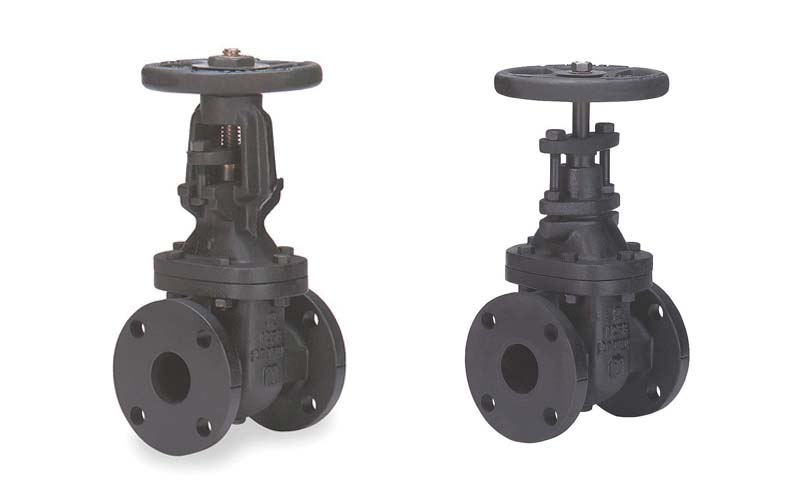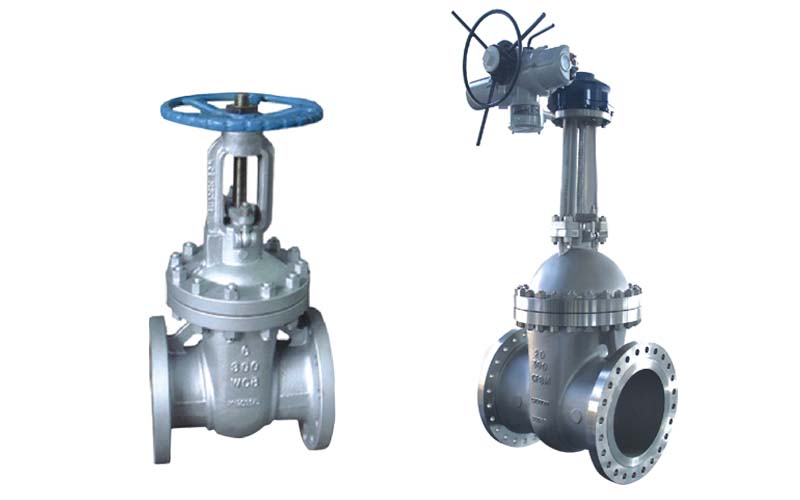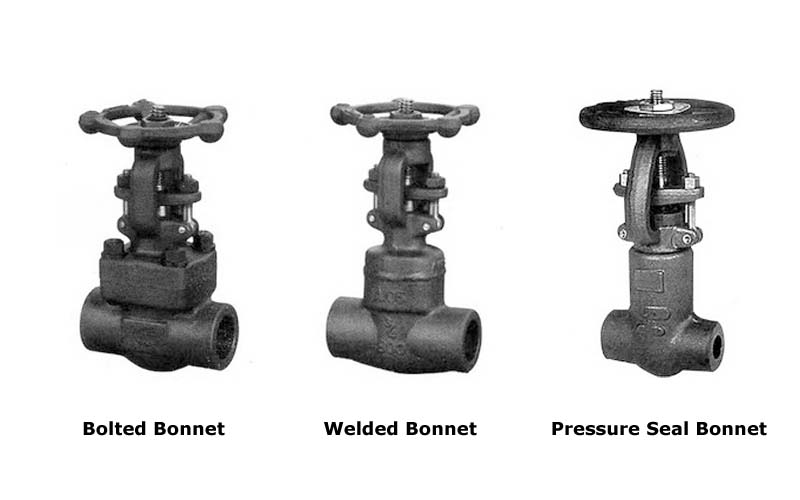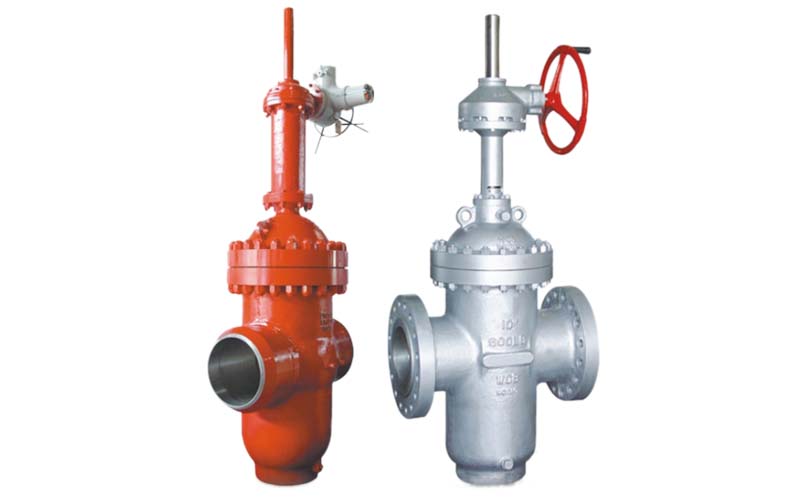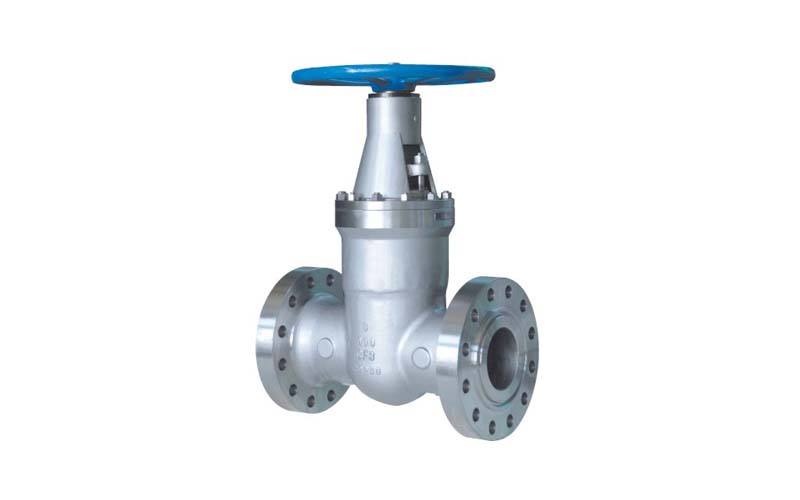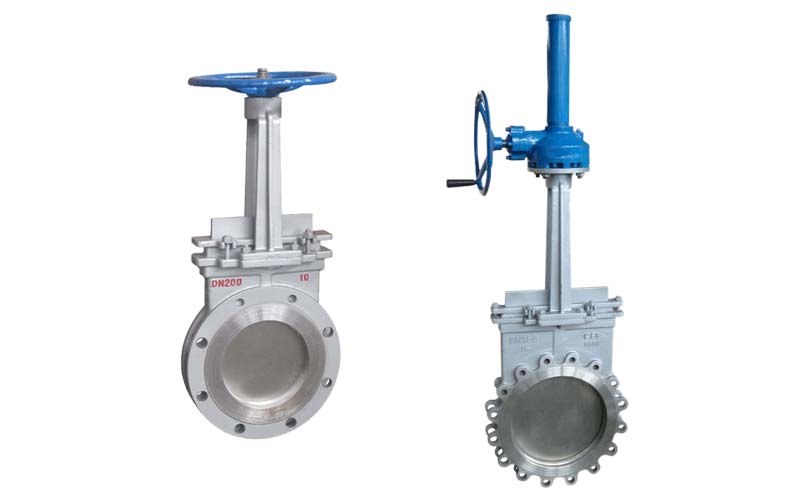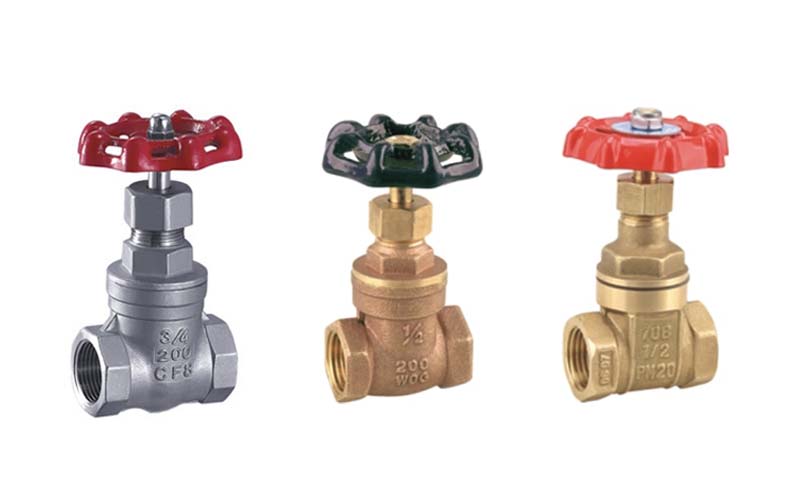China Gate Valve
EG Valves Supply Top China Gate Valve include Cast Iron Gate Valve, Cast Steel Gate Valve, Forged Steel Gate Valve, Knife Gate Valve & Threaded Gate Valve.
This gate valve guide article written by our EG Valves technical department may be the most detailed guide on gate valves on the Internet.
The Complete Guide of China Gate Valve
Basics: What are Gate Valves?
China Gate valve is among the most usual valve kind of isolation valves. This kind of valve could be discovered in every chemical plant, power plant, refinery, and industrial manufacturing devices, and gate valve’s size could range from DN6 to DN4200. The primary function of choosing a gate valve is to cut off the medium. It is for this factor that gate valves are commonly referred to as “Cut-Off valves” or “Stop valves”.
Gate valves are usually used in work conditions with completely open or completely closed operations. When completely open, the pressure drop via the china gate valve is very small; when completely closed, it has great pressure sealing efficiency. Because of the collaboration of the gate and the seat ring, almost no leakage happens when the valve is completely closed. Another advantage of gate valves is that they usually open and close slowly. This feature can prevent fluid water hammers from damaging the piping system.
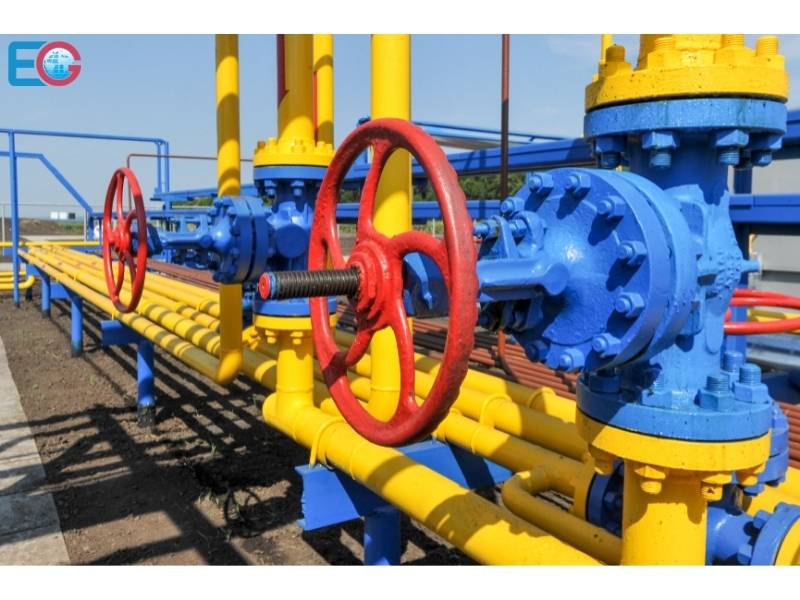

Among the many general valve types, only full-bore ball valves can have the same flow characteristics as gate valves. The symmetrical design structure and equal seals enable the gate valve to cut off the medium flow in either direction. The gate valve can also be made of various materials. You can find a small brass gate valve of DN15 on the shelf of a hardware store, you can also find a special alloy gate valve from the nuclear island of a nuclear power plant.
The major restriction of the gate valve is that it cannot be used to throttling situations. When the gate valve is applied in throttling situations, the medium usually has a high flow speed near the valve seat, which can cause corrosion. Also in the partially opened state, the gate will swing under the impact of the medium, which will cause damage to the sealing pair. Generally, gate valves are more prone to wear on the valve seat and the sealing surface of the gate than globe valves. However, it is difficult to repair this kind of wear by grinding and polishing.
Due to the fact that the structural features of the gate valve are really ideal for massive installations, its application range is continuously expanding, and it is developing towards high temperature and high pressure. The max size of the gate valve has actually reached DN4200, and a large number of high-pressure gate valves of PN320 have been used in the synthetic ammonia plant. The maximum working pressure of API 6A gate valves used in oil and natural gas drilling and production wellheads has also reached 138MPa. The key to manufacturing high-temperature and high-pressure gate valves is to solve the problem of wedging of the gate due to temperature changes and to ensure its reliable sealing performance. For this reason, it is necessary to research and improve the sealing structure of the gate and the valve seat. Flexible valve seats and flexible floating valve seats have begun to be used, enabling gate valves to achieve inlet sealing, outlet sealing, or double sealing at the inlet and outlet. At present, the service life of gate valves is still difficult to compare with other valves. How to improve the service life of gate valves is also an important task for the development of gate valves in the future.
What Are the Main Parts of Gate Valves?
While the body of the gate valve is immensely important as it’s what comes into direct contact with the pressure of the flow, there are many more important parts of gate valves to get a grasp of this type of valve. Let’s look at them below.
- Body: Also called the shell of a valve, the body of a gate valve is crucial because it receives the initial pressure. It’s usually cylindrical with the stem, disc, and other operation parts of the valve inside it. Depending on the requirements, the valve body may be cast or forged in materials like steel, stainless steel, and alloy steel. The body is connected to the piping by threading, clamp flange, butt weld, socket-weld, union, or other mounting options.
- Bonnet: The opening part on top of the valve body is called the bonnet, which contains all the moving parts of the gate valve. It’s typically bolted in for easy maintenance and repairs and used for protecting the operational parts inside. Within a bonnet, you can see the stem, gland follower, and packing. It’s connected to the stem via welding, threading, or bolting to close the valve.
- Gate (Disc): One of the central parts of the gate valve, it can be of wedge type, parallel type, one-piece type, two-pieces type, etc. The gate is typically placed stationary in a gate valve.
- Seat: A companion to the disc, the seat is created to the shape and size of the disc or wedge for snug-fitting. It’s crucial to prevent leaks and most gate valves come with two seats, on upstream and downstream sides.
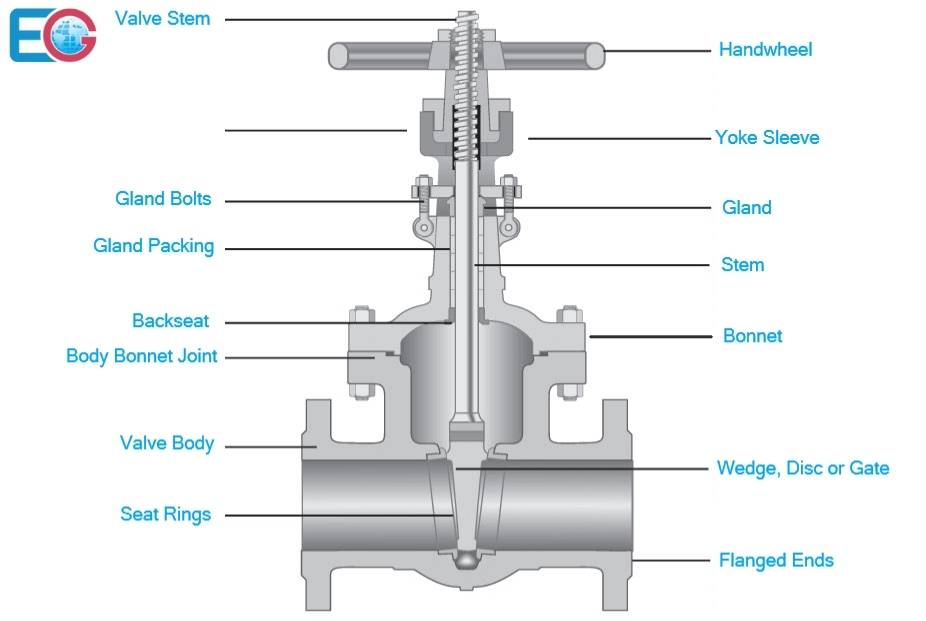
- Stem: The stem is the part of the gate valve that connects the actuator to the handwheel and rotates with the handwheel. It’s crucial for lowering or raising the disc or wedge. There are two types that we studied earlier- rising or non-rising. The stem is attached to the disc on one side and the rotating handwheel on the other.
- Handwheel: There are many types of operations used by gate valves- Handwheel, Worm Gearbox, pneumatic or electric actuator. Manual mode is completed by screw and handwheel/gearbox with the screw being rising or non-rising. On the other hand, pneumatic or electric actuators are used when the gate valve is out of access with regular operation.
How To Define Whether A Gate Valve Is Open Or Closed?
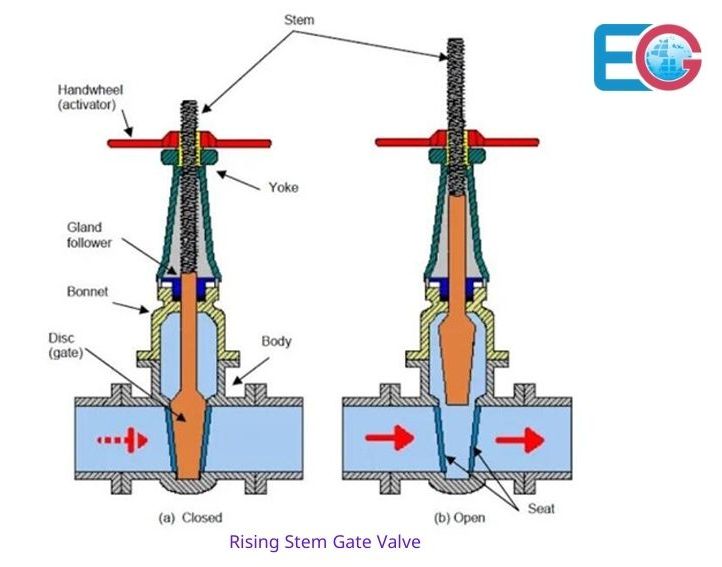
When it comes to the rising stem, you can check the position of the stem to determine whether the gate is open or closed. On the flip side, you can’t easily make such a guess within a non-rising stem china gate valve. Instead, you can mount a position indicator on the non-rising gate valve to determine the position.
Most gate valves around the world close in a clockwise direction and open in an anti-clockwise direction. When the gate lifts from the path of the media flow, it’s open and closed when it’s lowered into the path of flow.
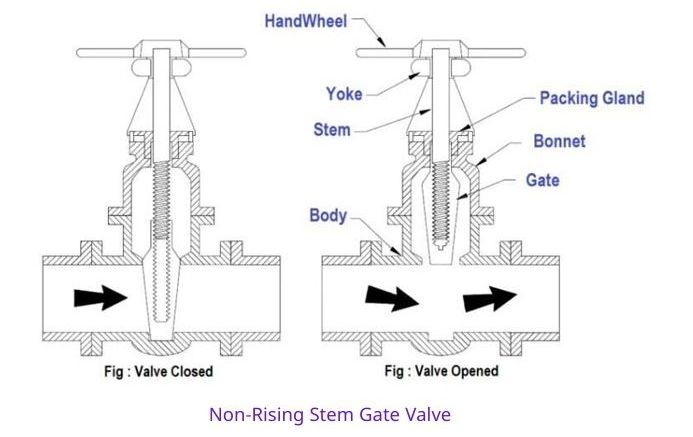
How Does A Gate Valve Work?
A gate valve is a valve that its closure member is driven by the valve stem and moves linearly along with the valve seat (sealing surface). A gate valve is a linear motion valve that uses a typically flat closure member perpendicular to the process flow, which slides into the flow stream to provide shutoff.
When compared to other kinds of valves, the gate valve is relatively inexpensive as well as easy to maintain and disassemble. When used with a metal seat, a gate valve is inherently fire-safe and is often specified for fire-safe service.
Gate valves do not deal with throttling applications well due to the fact that they offer insufficient control attributes. This is to say, the gate valve cannot be utilized to adjust the flow, and can just be utilized as a shut-off device, either completely open or completely closed. They are most commonly applied in simple on-off services as block valves.
Among various types of valves, gate valves are the most widely used. It is not only suitable for normal temperature and normal pressure working conditions, but also suitable for high temperature and low temperature and high pressure and low pressure working conditions, and can be applied to various media by selecting different materials.
What makes Gate Valves from EG Valves a Great Choice?
- Over two decades of technical expertise making gate valves for different industries.
- Quick Turnaround Time, processing, and delivery time.
- EG Valves supply China Gate Cast Steel, Brass, Forged Steel, Stainless Steel, Our gate valves include Wedge Gate Valve, Metal Seated Gate Valve, Resilient Seated Gate Valve, Parallel Gate Valve, Knife Gate Valve, etc.
- Our gate valves comply with standards such as API, ASME, BS, ISO, MSS, DIN, ISO, and ANSI.
- Option to send customized orders for gate valves.
- Reliable, fast, and flexible shipping options with FCL, LCL, Air Transport, FEDEX, DHL, etc.
- Large sizes of gate valve orders are also accepted at EG Valves.
- Expert quality control processes for each stage of production.
- Track record of catering to customers in Europe, North America, the Middle East, Asia-Pacific, and Latin America.
- 24×7 Available customer service with proficiency in several languages.
- Excellent packaging norms that prevent damages in transit by using multiple layers of plywood.
- Guaranteed immediate response to inquiries. Get in touch via our contact form today!
What Are The Advantages Of Gate Valve?

The gate valve has several advantages as below:
- The flow resistance is The inner fluid channel of the gate valve body is straight, and also the fluid doesn’t alter its direction when flowing via the gate valve, so the flow resistance is little.
- The face-to-face dimension (the distance between the two ends connected to the pipeline) is small. Since the gate is in the shape of a disc and is placed vertically in the valve body, and the valve disc of the globe valve (also in the shape of a disc) is placed in the valve body in parallel, the gate valve’s face to face length is smaller than that of the globe valve. For example, the CL150 DN150 globe valve has a length of 406mm, while the length of the gate valve with the same parameter is only 229mm.
- The opening as well as closing are less labor-costing. When opening and also closing, the direction of movement of the gate is vertical to the direction of fluid flow, while the direction of movement of the globe valve disc is usually opposite to the direction of medium flow when it is closed, so the globe valve needs to overcome the force of the medium. Consequently, compared to the globe valve, the opening as well as closing of the gate valve is much easier.
- The flow direction of the fluid is not restricted. The fluid can flow through the gate valve in any direction from both sides of the gate valve, and also both can attain the function of changing on or off. Easy to set up, the gate valve appropriates for pipes where the flow direction of the fluid might alter.
- When fully open, the sealing surface is slightly eroded by the working medium.
- The body structure is relatively simple, and the manufacturing process is better.
What Are The Disadvantages Of Gate Valve?
Meanwhile, the china gate valve also has some shortcomings as follows:
① The sealing surface is prone to scratches.
When opening as well as closing, there is relative gliding between the both sealing surfaces of the gate and the valve seat, which are prone to scrapes under the activity of the fluid thrust, which damages the sealing efficiency and impacts the valve’s life span.
② There are many parts, the structure is more complicated, the manufacturing and maintenance are more difficult, and the cost is higher than the globe valve.
③ The total dimensions and opening elevation are large, and the space required for installment is also large.
④ Usually, gate valves have 2 sealing pairs, which will add some difficulties to processing, grinding, as well as maintenance.
⑤ Large operating stroke and long opening and closing time. Because the gate needs to be completely lifted above the seat in the internal cavity when opening, and the whole gate needs to be dropped to block the channel when closing, the opening and closing stroke of the gate is large, and the opening as well as closing operation will take longer time.
When does the gate valve need to be equipped with a bypass valve?
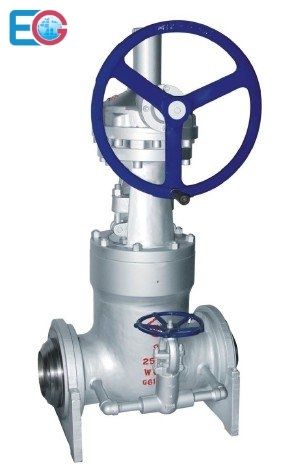
The sealing force of a larger gate valve can become very high under the action of the medium pressure, and the friction between the sealing surfaces will easily make the gate difficult to lift. Therefore, larger sizes gate valves often need to provide a bypass valve. Most of the time, a small size globe valve is used as a bypass valve. The bypass valve is used to relieve the inlet pressure of the medium before the valve is opened, it can reduce the pressure difference between the inlet and outlet so that the gate valve can be opened more easily, meanwhile, it can also preheat the outlet pipeline. There is no clear regulation on when to use the bypass valve. Sometimes we as manufacturers will recommend clients to add a small bypass valve for large sizes gate valves, and sometimes our clients will require to add a bypass valve.
Some gate valve standards include the recommended min size of the bypass gate. In an environment with gas and steam, such as water vapor condensing in the downstream system, and the pressure of the downstream system drops, the bypass valve’s size should be larger than the minimum size provided as per our experience.
What Are The Different Types Of Gate Valves?
By Different Body and Bonnet Connection
Screwed Gate Valve
Made with simple construction, screwed-in gate valves are excellent if you use small sizes brass or bronze gate valves. The bonnet is screwed here and without much disassembly. It’s usually available in small dimensions and ensures a leak-proof flow of liquid.
Welded Gate Valve
Besides being an efficient type of gate valve that doesn’t need any disassembly, welded gate valves are lightweight than the bolted variety. The bonnet undergoes torquing and threading to an optimum engineering limit where the joint between the body and bonnet of the valve is welded. Such construction ensures there’s 2 x protection from any leakage. Welded gate valves are commonly used for steel gate valves in size options ½ inches to 2 inches and pressure classes between 800 to 2500. Moreover, these are light in weight too.
Bolted Gate Valve
Another extremely popular and commonly seen gate valve in industrial applications, bolted gate valves use a gasket to enforce a seal at the point where the bonnet and body meet. Most low-pressure bolted gate valves in ANSI Class 150 steel uses either graphite or corrugate soft iron gasket. But bolted gate valves of ANSI Class 300 and above use a gasket that’s spirally wound or ring-jointed. The bolted bonnet valves can seal huge valves easily in high-pressure ratings. The body and bonnet of the valve are flanged as well as bolted here.
Pressure-Seal Gate Valve
Settings that require high temperature and pressure will find pressure-seal gate valves excellent for the job. The best thing is this type of valve is easy to remove for routine maintenance.
The pressure seal gate valves are ideal for conditions with pressures above 15 MPa. It works by creating an internal pressure enough to seal the bonnet. Such a system has a cup present in the valve body that faces down and when the pressure rises inside, the cup faces outward. This is how sealing is enhanced in this type of pressure-seal gate valve.
In such a valve, the force on the gasket increases with the pressure in the cavity of the body. It’s a common valve in industries like power where high-pressure and high-temperature equipment is crucial.
The pressure seal in such a valve is energized with the pressure of the fluid that affects the wedge. This is the main reason that pressure seal gate valves don’t feature settings lower than ANSI Class 600.
Here’s a video of a pressure-seal gate valve to understand how it works.
By Different Stem Structure
The valve stem is the main operating part of the china gate valve. Its feature is to move the opening and closing force to the gate which works as a flat closure member. It is classified according to the sort of stem structure.
1. Rising Stem Gate Valve (Abbreviated to RS Gate Valve)
The trapezoidal screw of the valve stem is put outside the body and also situated on the top part of the valve stem. By turning the valve stem nut, the valve stem drives the gate plate to rise and fall synchronously to fulfill the opening as well as closing of the valve. As a result, it is very easy to recognize the opening or the closing state of the valve and it is simple to prevent misoperation. Since the stem nut is outside the valve cavity, it is easy to lubricate, and the opening as well as the closing state are instinctive and apparent, so Rising Stem Gate Valve is widely utilized.
However, in severe environments, the exposed threads of the valve stem are prone to damages and deterioration, maybe even impacting valve operation. Its drawback is that the height of the gate valve after opening up is large, and also a stroke is generally added to the original height, which needs a relatively large operating space.

2. Outside Screw and Yoke Gate Valve (Abbreviated to OS & Y Gate Valve)
It is mainly used in industry, especially in corrosive conditions, because the stem nut basically does not contact the medium, and it is far away from potential corrosion hazards. In this structure, the handwheel or bevel gear is connected to the valve stem nut on the top of the valve yoke, rather than directly connected to the valve stem itself, so the handwheel or bevel gear will not rise with it when the valve is opened.
We can say all OS & Y Gate Valves are Rising Stem Gate Valves, however not all Rising Stem Gate Valves are all OS & Y Gate Valves because there is an exception. There is also a valve with a structure as below ISRS Gate Valves.
3. Inside Screw Rising Stem Gate Valve (Abbreviated to ISRS Gate Valve)
This structure is the one of the most frequently used stem structure for small sizes brass or bronze gate valves today. Since the screw of the valve stem is exposed to the medium, there is a possibility of corrosion, which will cause the valve stem and the gate to fail. Therefore, this structure is generally not suitable for critical industrial valves.
4. Non-Rising Stem Gate Valve (Abbreviated to NRS Gate Valve)
The stem nut is put inside the valve body and is usually fixed on the gate. Through the turning of the valve stem, the stem nut drives the gate to go up and down to finish the opening as well as closing. Since the trapezoidal screw utilized for transmission is placed inside the body, although it is not affected by the external environment, it is quite easily corroded by the fluid and could not be lubricated. The opening or closing state cannot be directly observed, so sometimes an indicating device will be required.
Meantime, because the valve stem does not need to be raised when the valve is opened, this structure is a special type used when the vertical space above is restricted. This is to say, its valve stem does not need to move up and down, so it requires a relatively small operating space, it is suitable for occasions where the location of the pipeline is limited, such as ships, underground pipelines, etc.
This structure is often used for Rubber-Seated Gate Valves used in drinking water, and we will surely elaborate on the characteristics of this gate valve in detail later.
By Different Design & Structure of the Closure Member (Gate)
The structure type of the gate valve usually refers to the type of the gate, and the type of the gate is separated into two types: wedge type and parallel type. That is to say, a wedge-type gate valve is called a Wedge Gate Valve, and a parallel-type gate valve is called a Parallel Gate Valve.
A typical design standard of Wedge Gate Valve is API600, and another typical design standard of Parallel Gate Valve is API6D. Here’s a video of what is Difference Between API 600 and API6D standards.
Wedge Gate Valve
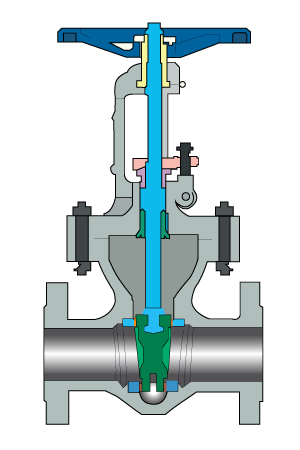
The difference between the wedge gate valve and the parallel gate valve is that the closure member (the gate) of the wedge gate valve is wedge-shaped instead of parallel-shaped. The purpose of using the wedge-shaped gate is to present a high extra seating load that lets metal-seated wedge gate valves to seal not just against high but also against low and medium fluid pressures. In this way, the degree of seat tightness that the metal-seated wedge gate valve can achieve is higher than that of the conventional metal-seated parallel gate valve. However, the seating load at the inlet (upstream) end of the metal-seated wedge gate valve caused by the wedging action is not normally high enough to achieve the inlet end seal, so the wedge gate valve is a single-side sealed gate valve.
The bodies of these wedge gate valves have guide ribs, or slots, in which the gate (disc) travels. The primary function of these guides is to bring the gate (disc) far from the downstream seat except for some distance near the valve closed placement to reduce wear in between the seats. A 2nd function of the guides is to avoid the wedge gate from turning exceedingly while traveling in between the open as well as the closed valve placements.
Compared to parallel gate valves, wedge gate valves also have some drawbacks:
1. Wedge gate valve could not add a follower conduit (diversion hole) as easily as a parallel gate valve could.
2. When the wedge gate comes close to the valve seat, there is some opportunity of the seats capturing solids brought by the medium. Nonetheless, rubber-seated wedge gate valves can seal around little caught solids.
3. An electric drive for wedge gate valve is much more complex than for parallel gate valve because the drive need to be torque-limited rather than travel-limited. The operating torque of the drive need to be large enough to impact the wedging of the wedge gate into/ out of the seats.
Attempts to enhance the efficiency of wedge gate valves resulted in the development of many kinds of wedge styles; the most typical ones are defined as below:
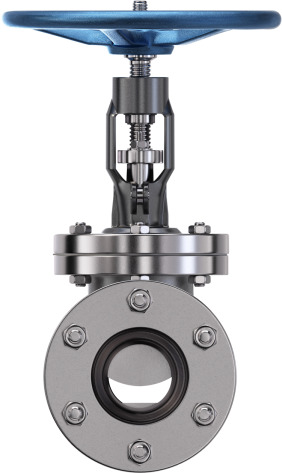
Three Different Wedge Structures of Wedge Gate Valve
Commonly used Wedge Gate Valve structures are divided into three types: Solid Wedge, Flexible Wedge, and Two-Piece Split Wedge.
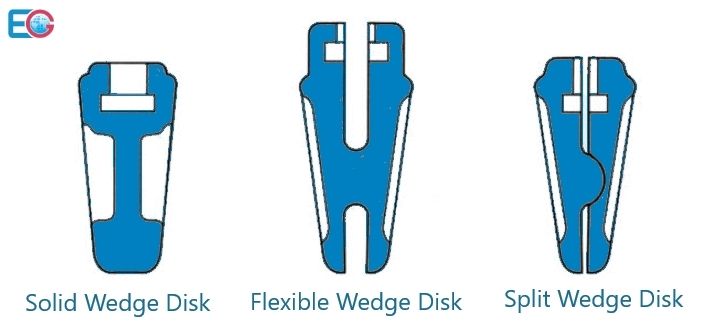
Solid Wedge Gate Valve
Solid Wedge type is the most typical & commonly used wedge type due to its simpleness and also strength. Solid wedge gate valves are also considered to be the most economical, almost all small sizes of gate valves less than or equal to DN50 (2 Inches) are designed with solid wedges, which are suitable for low-temperature conditions. (Generally, its working temperature does not exceed 120°C / 250°F)
If used in higher temperature service, a solid wedge gate valve is subjected to the thermal binding. (Thermal binding is a situation that a wedge would get stuck between the seats due to metal’s thermal expansion caused by temperature rises.) From a technical point of view, the reason for this problem is simple. This one-piece solid wedge structure cannot compensate for changes in valve seat alignment caused by pipeline load changes or thermal expansion.
Flexible Wedge Gate Valve
The difference between the flexible wedge and the solid wedge is that the flexible wedge has one annular cut or two annular cuts around the wedge perimeter. It is this cut that gives the wedge a certain degree of flexibility. When the gate valve is closed, the slight deformation of the wedge can compensate for the small gap between the wedge’s edge and the valve seat. This flexible wedge construction improves seat alignment and could offer better sealing performance.
Thermal expansion and contraction, as well as the contraction stress caused by the deformation of the valve body, will not easily cause the flexible wedge to get stuck between the seats.
The flexible wedge structure is suitable for medium and small sizes gate valves of various pressures and temperatures, but the medium must not contain too many solid particles to prevent accumulation in the annular cut of the wedge and affect its flexible deformation ability.
Two-Piece Split Wedge Gate Valve
The Two-Piece Split Wedge is composed of two disc halves, which are hinged to form a wedge-shaped gate with a spherical top center. The angle can be adjusted freely to achieve a good fit with the two valve seats. The angle of the wedge seal can be automatically adjusted by the hinged top center spherical surface, so the processing accuracy of the wedge angle of the sealing surface is relatively low. When the temperature changes, it is not easy to be stuck, and it is not easy to cause abrasion.
Two-Piece Split Wedge Gate Valve is usually installed vertically in the pipeline of water and steam medium. This structure can solve the following problems that are easily caused by the one-piece wedge structure in actual working conditions: If the valve body gets unexpected pressure or torque, it may twist, but two-piece split wedge gate valve can still be normally open because the valve seat seal load has been eliminated before the disc halves tried to open. If the valve body is only slightly twisted, the independent disc halves can move along their respective valve seats. When the valve is closed, the temperature change will not cause the wedge to get stuck between the seats. The design of this valve is suitable for the size of DN50~DN600 (NPS 2~24). The valve body materials include ductile iron, carbon steel, chromium-molybdenum steel, stainless steel, duplex stainless steel, and nickel alloy, etc., and the working temperature range can reach -196~816℃.
There is another point of knowledge, the two-piece split wedge gate valve is only allowed to be installed on the horizontal pipeline, and the valve stem is installed vertically upwards.
Common used Wedge Gate Valve for Various Industrial Uses
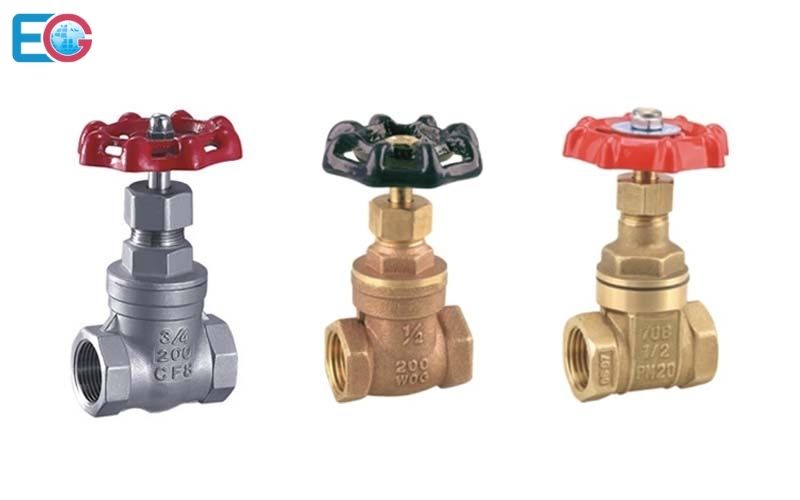
Small Sizes Threaded Stainless Steel / Bronze / Brass Gate Valve
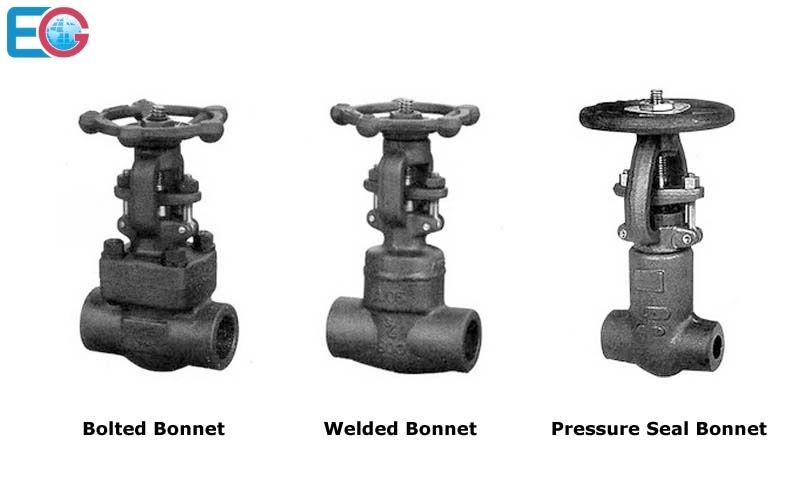
Small Sizes Forged Steel Gate Valve
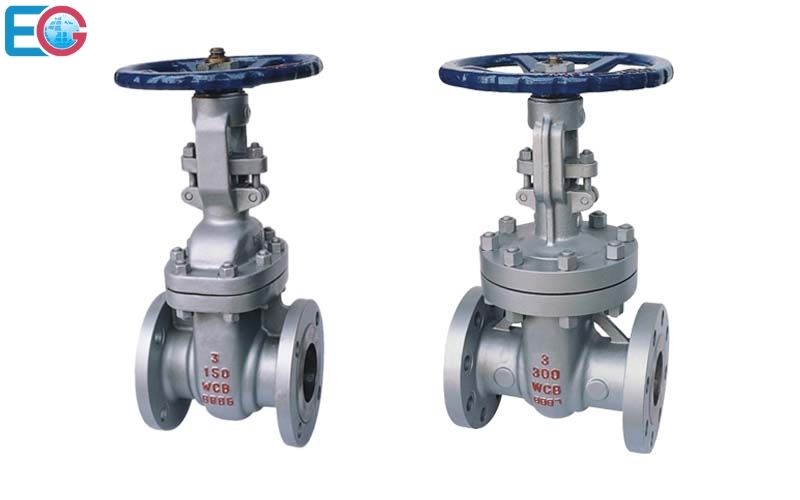
API Cast Steel Gate Valve
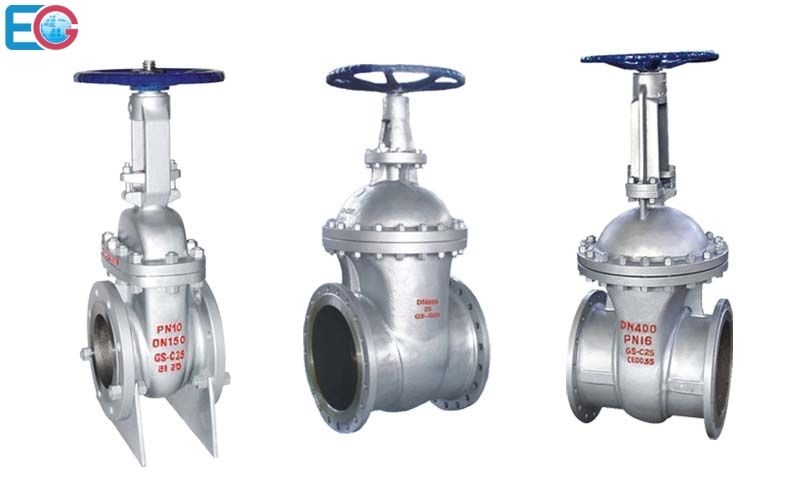
DIN Cast Steel Gate Valve
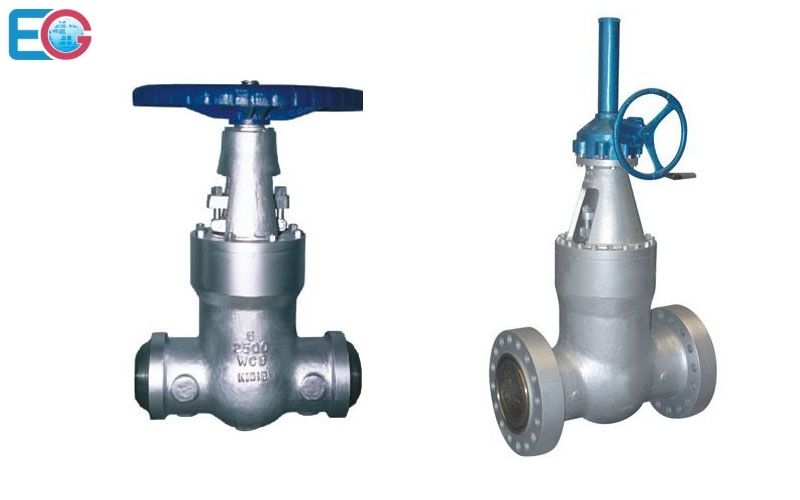
Pressure Seal Gate Valve
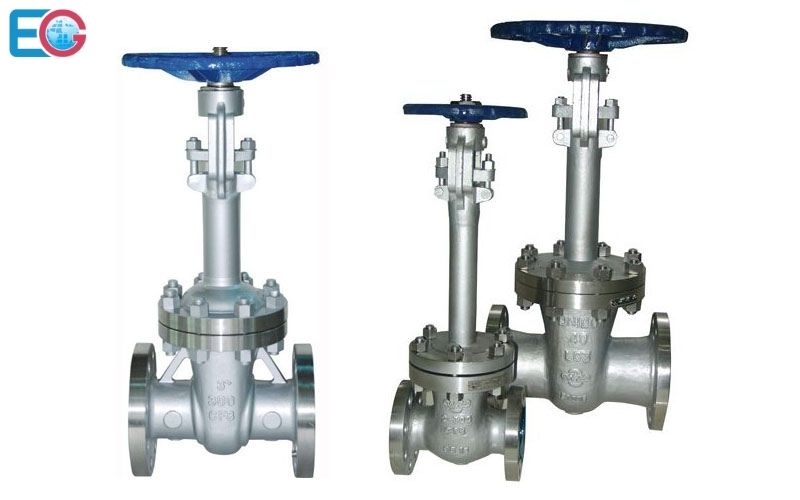
Cryogenic Gate Valve
Common used Wedge Gate Valve for Water, Potable Water / Wastewater
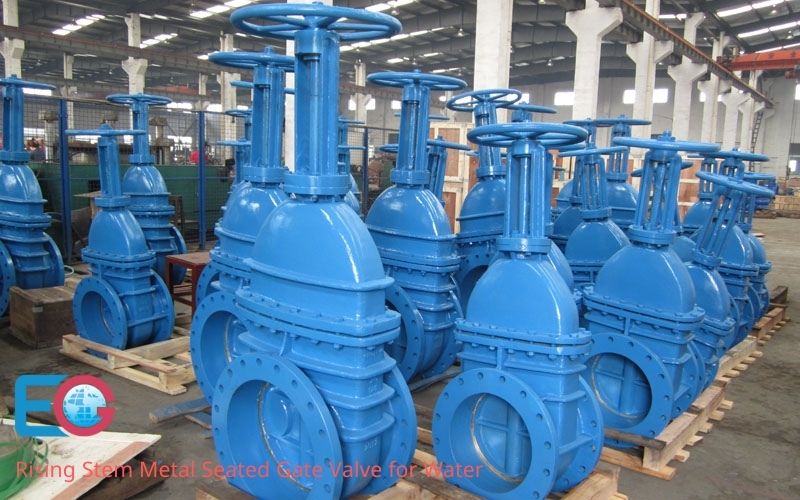
Rising Stem Metal Seated Gate Valve from DN50 to DN600
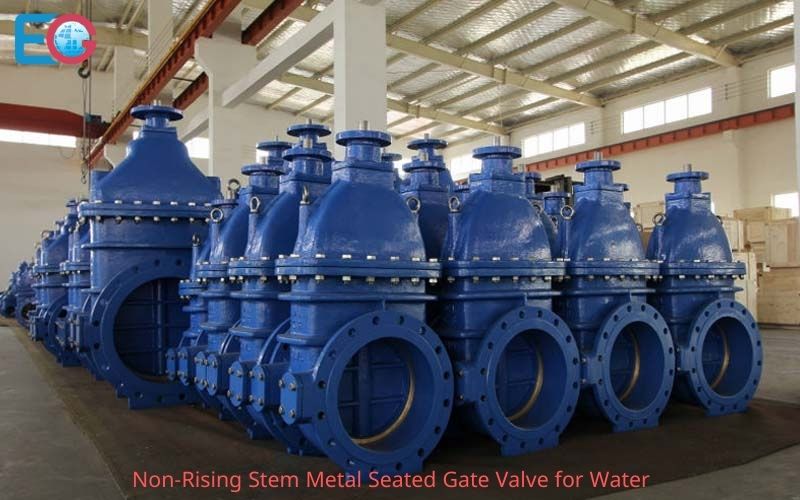
Non-Rising Stem Metal Seated Gate Valve from DN50 to DN1200
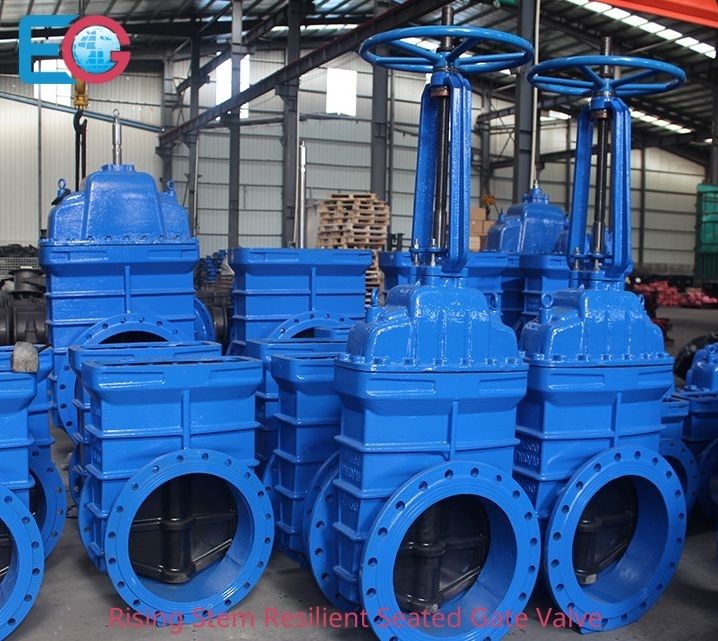
Rising Stem Resilient Seated Gate Valve from DN50 to DN600
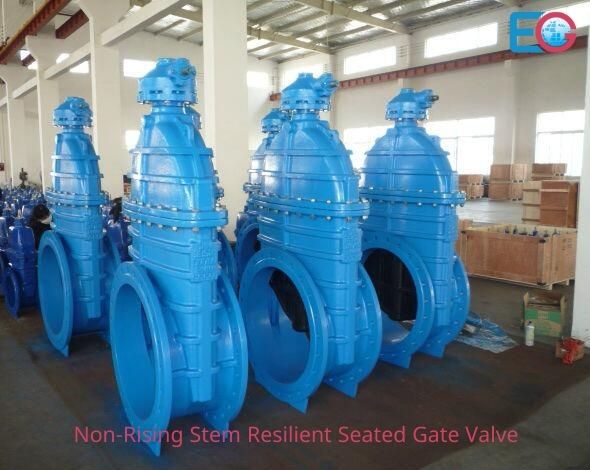
Non-Rising Stem Resilient Seated Gate Valve from DN50 to DN1200
Metal Seated Gate Valve Background Information
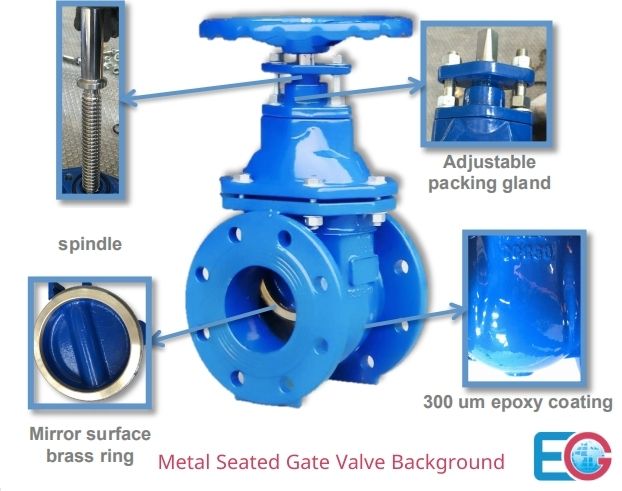
This kind of metal seated gate valve has been widely used until now. The wedge gate (disc) of the traditional valve is made of metal, and the seat surface is also processed from metal. The seat surface needs to be processed very smoothly so that the gap of the sealing surface is very tiny. In addition, the great closing pressure makes the gap close to tightness and achieves no leakage or little leakage to meet the requirements of use.
From the figure, you can see its conical wedge and angular seat surface will need a depression in the bottom of the valve cavity to ensure a tight closure. However, the depression here will bring it a shortcoming. (Sand, pebbles, or other debris may be deposited here). As per our experience, the pipe system will need to firstly install a Y-Strainer or Basket Strainer to purify the water and remove sand and pebbles before the installation of a metal seated gate valve.
When used with a metal seat, a gate valve is inherently fire-safe and is often specified for fire-safe service. Compared with the below resilient seated gate valve, another advantage of the metal seated gate valve is that it can withstand higher temperatures up to 500℃. The reason is very simple that metal materials can always withstand higher temperatures than rubber materials.
Resilient Seated Gate Valve Background Information
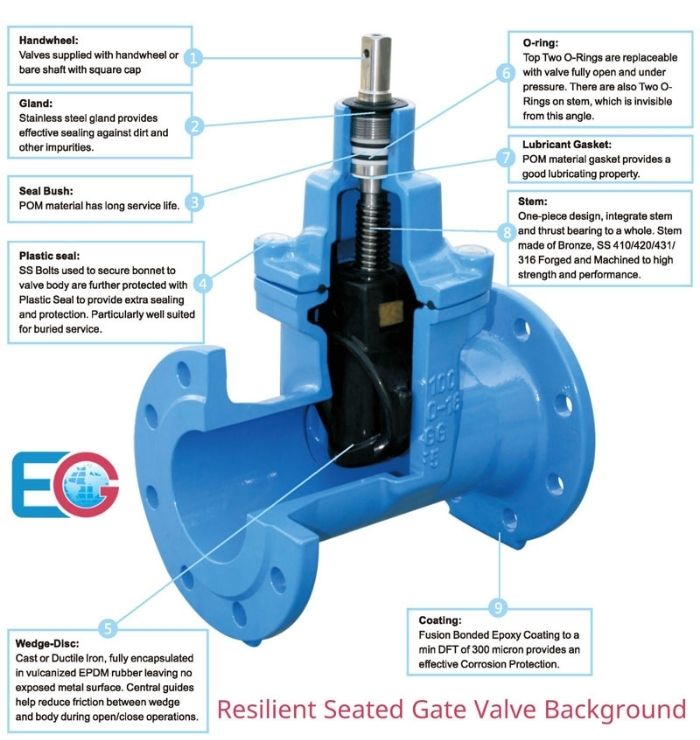
Resilient Seated Gate Valve, also known as Soft Seated Gate Valve / Rubber Seated Gate Valve, is an updated product of ordinary medium and low-pressure water valves, and it is a green and environmentally friendly product. It is widely used as a shut-off valve for potable water (drinking water), wastewater (sewage), construction, fire protection, and some neutral liquids.
In 1955, the world’s first resilient seated gate valve was born in a small town called Vöcklabruck in Austria, which had a profound impact on valve manufacturing worldwide. The resilient (soft) seated is quite different from metal seated. For this kind of resilient seated gate valve, as shown in the figure, the gate made of ductile iron is covered with a thick layer of non-toxic rubber (direct vulcanized EPDM rubber or NBR rubber). EPDM has excellent aging resistance, outstanding compression resistance, and also can avoid the damage of organics, ozone, and also ultraviolet rays. Nowadays almost all European countries water supply pipes’ rubber rings are all made of EPDM.
The bottom part of the valve cavity is smooth and has no depression, just like a section of pipe. The EPDM/NBR rubber contacts the circular inside passage of the valve cavity to form a certain degree of squeezing to achieve sealing. (The small amount of deformation caused by the force of the rubber achieves a good sealing effect, and the sealing is reliable, and zero leakage can be achieved.) The valve has the advantages of a large flow area and small flow resistance coefficient, and the lower part of the valve cavity will not deposit sand, pebbles, or other debris. The gate is covered with rubber as a whole, thereby effectively isolating the direct contact between the metal gate and the medium, and avoiding the rust and pollution of the valve internals when the medium passes through the valve. By changing different coating materials of the gate and the inner valve cavity, this kind of valve can also realize resistance to various corrosive media. Moreover, this resilient seated gate valve’s opening and closing torque are small (easy to operate), it has a long service life & its blue color epoxy coating makes it more beautiful.
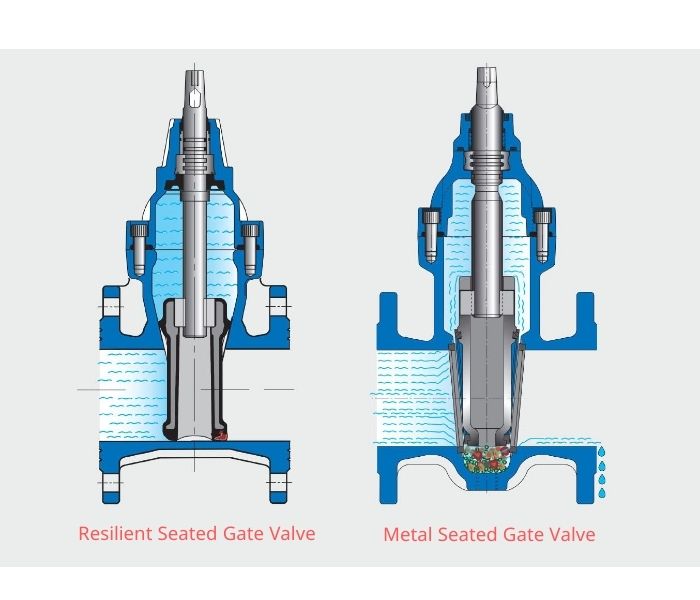
According to EG Valves’ statistics, nowadays approximately 70%~80% of our clients choose resilient seated gate valves for their water/sewage projects. However, the operating temperature of the resilient seated gate valve has certain limitations due to rubber cannot withstand very high temperatures. (Please note EPDM≤120℃, NBR≤80℃)
Wedge Gate Valve Applications
Among various types of valves, wedge gate valves are the most widely used. It is generally only suitable for fully open or fully closed, and cannot be used for adjustment and throttling. Meanwhile, in the occasions where the opening and closing frequency is low, a wedge gate valve should be used.
Wedge gate valves are generally used on occasions where there are no strict requirements on the valve’s external dimensions and the working conditions are relatively harsh.
Such as High temperature and high pressure working medium; The closure members must guarantee closed for a long time, etc.
Generally, wedge gate valves are recommended for the following working conditions:
- Reliable sealing performance required.
- High-pressure cut-off (large pressure difference).
- Low-pressure cut-off (small pressure difference).
- Low noise.
- When there is cavitation and vaporization.
- High-temperature medium.
- Low-temperature medium (deep and cold).
Such as the Electric power industry, Petroleum refining, Petrochemical industry, Offshore oil, Urban water supply engineering, and Sewage treatment engineering, Chemical industry, and other fields.
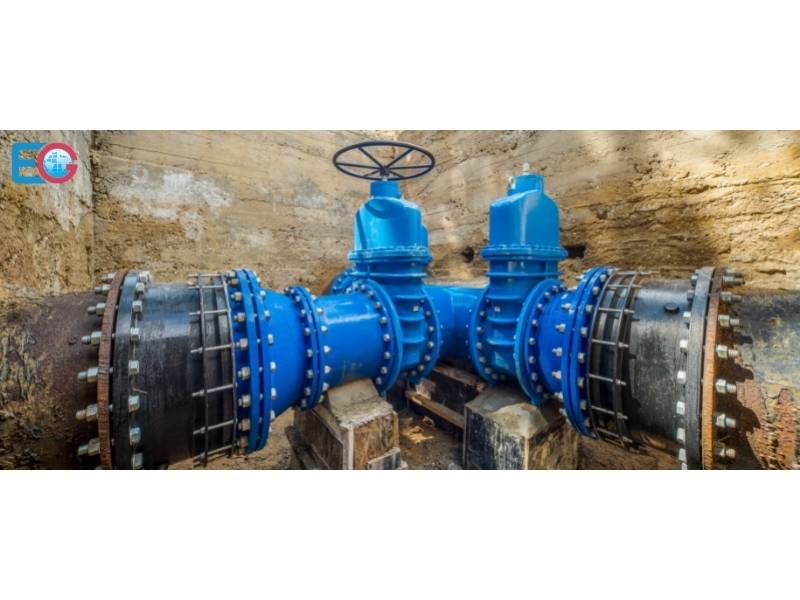
Parallel Gate Valve is a kind of slide valve with a parallel-faced closure member. This closure member might include a single disc or dual discs with an expanding device in between. The parallel gate valve utilizes the closure member which fits in between 2 parallel seats, an upstream (inlet) seat as well as a downstream (outlet) seat.
To attain the needed shutoff, both the seats and the closure member are free-floating, enabling the upstream stress to seal the seat as well as closure member against any undesirable leakage. The force that presses the disc against the seat is regulated by the medium stress acting upon either floating disc or floating seat. For dual discs parallel gate valves, this force might be supplemented with a mechanical pressure from the expanding device in between the two discs.
Compared to the wedge gate valve, when the parallel gate valve is closed, there is no wedge tightening force generated by a wedge, so relatively speaking, the parallel gate valve is more flexible, the service life is longer, and the opening and closing force is smaller.
Another benefit of parallel gate valves is their reduced resistance to flow, which like full-bore valves comes close to that of a short straight pipeline. Parallel gate valves can also handle fluids that bring solids in suspension due to the fact that the disc glides throughout the seat face.
Furthermore, when the parallel gate valve is closed, high precision in the positioning of the discs is not essential, therefore an electrical drive for the valve can be traveling limited. Since this type of electrical drive (travel-limited rather than torque-limited) is both affordable and dependable, the parallel gate valves are commonly chosen as stop valves in larger power plants because of this reason alone.
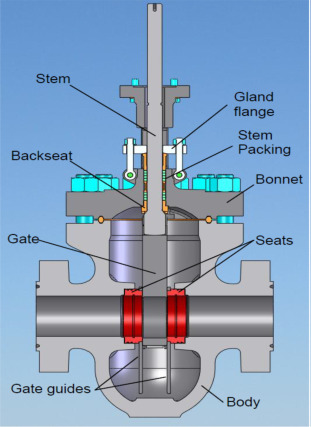
However, parallel gate valve also has some disadvantages as below:
- If medium stress is extremely low, the seating force might be insufficient to obtain a sufficient seal in between metal-to-metal seats.
- Constant valve operation might result in extreme wear of the sealing faces. Consequently, the parallel gate valves are usually utilized for irregular valve operation only.
- Loosely guided discs as well as loosened disc parts will certainly tend to rattle strongly when shearing high density and also high-velocity medium. Generally, it can only be installed vertically on the pipeline.
- Flow control comes to be sufficient just in between the 50% closed and also the completely closed positions due to a circular disc traveling across a circular flow passage.
The parallel gate valve is widely used in water (boiler feed water), light oil, chemical, urban construction, environmental protection, and other industries as a shutoff valve. It is also suitable for systems containing sulfur (H2S) heavy oil, sewage and venting, and long-distance natural gas pipelines with fast flow rates, many impurities, and serious corrosion.

Through Conduit Gate Valve is also called Thru Conduit Gate Valve or Conduit Gate Valve. It is a kind of parallel gate valve with special inside construction of the closure member (disc). From the figure, you can see the Through Conduit Gate Valve’s rectangular closure member has a circular opening (it is called a conduit) equal to the full-area flow passageway of the gate valve. For your information, please also note that some valve engineers also call this conduit opening a “diversion hole”.
By lowering or raising the closure member, the opening is exposed to the flow (valve open) or the obstacle shuts off the flow (valve closed), respectively.
The design of the through conduit gate valve enables the seating surfaces of the seat to touch the disc at all times. With a full-area opening, it can allow the use of a pig valve to scour the inside diameter of the valve. (This pig valve will scour the inside of the gate valve as well as to remove any process buildup or scale.)
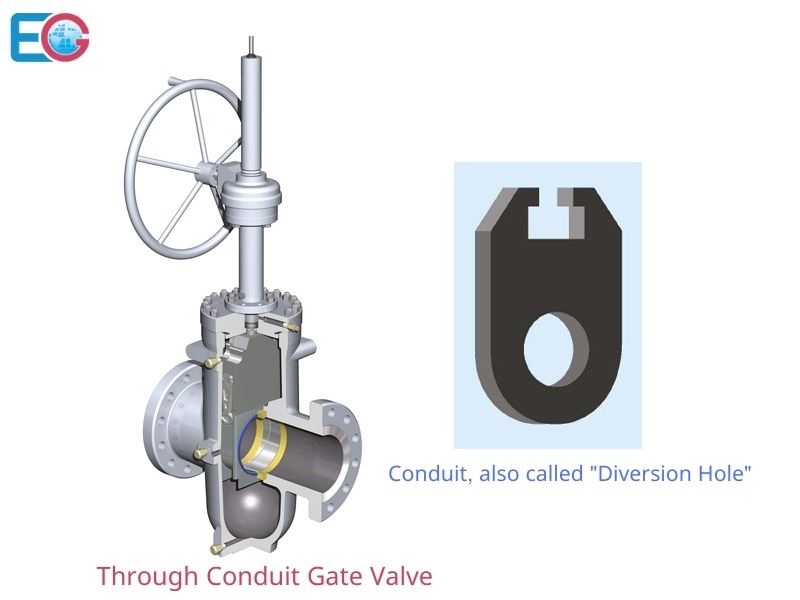
The through-conduit gate valves can also be divided into normally open type and normally closed type, as shown in the figure. The normally open conduit is opened on the upper part of the disc, and the normally closed conduit is opened on the lower part of the disc. To ensure the principle of turning the handwheel clockwise to close the valve, the normally open type should choose the right-hand trapezoidal threaded stem, the normally closed type should choose the left-hand trapezoidal threaded stem.
Please note that both the single disc parallel gate valve and the double discs parallel gate valve can be manufactured with a conduit (diversion hole). They are all called Through Conduit Gate Valve although their disc structures are different. We will elaborate on the three different disc structures of parallel gate valves as below.
Four Main Different Structures of Parallel Gate Valve
Commonly used Parallel Gate Valve structures are divided into four types: Single disc parallel gate valve, Parallel slide gate valve (two discs with spring inside), Expanding gate valve. (Two matching discs with expanding construction) and Wellhead gate valve.
- Single Disc (gate) Parallel Gate Valve Standard: API 6D
It is also called a flat gate valve or slab gate valve.
Single Disc (gate) Parallel Gate Valve is a flat disc (gate) polished on both sides. Its structure is simple and easy to process. However, it cannot rely on its structure to achieve forced sealing. Therefore, when the pressure difference between the two sides of the disc is small, the sealing performance between the disc and the valve seat is greatly reduced. Therefore, a fixed or floating soft sealing material must be used on the valve body and valve seat to increase its sealing performance when the pressure difference is small. It is only suitable for medium and large sizes pipelines of oil, gas, or natural gas with low or medium working pressure.
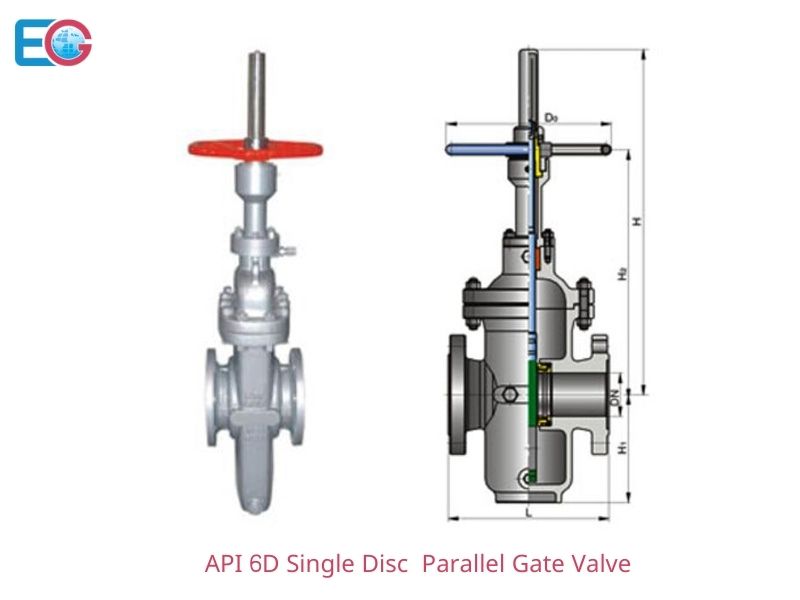
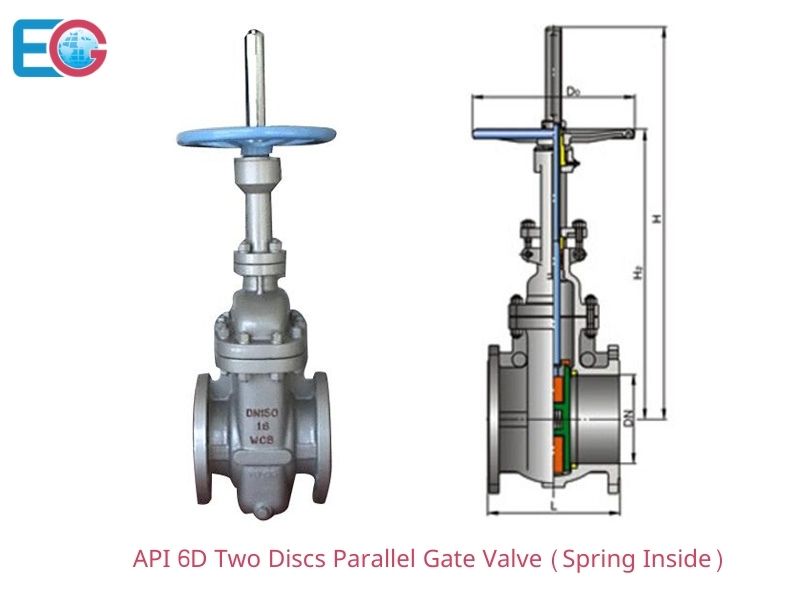
- Parallel Slide Gate Valve (Two discs with Spring Inside Construction) Standard: API 6D
The simplest and most effective self-sealing parallel slide gate valve structure is the spring structure shown in the figure. The closure member is composed of two slide discs with an Inconel spring in the middle. The function of the spring is to maintain sliding contact with the upstream and downstream sealing surfaces and to enhance the sealing force at low pressures. The two discs are confined by a holding plate so that they will not open unrestrictedly when in the fully open position.But the function of the spring is often not as assumed so that both sealing surfaces can achieve pressure sealing. (This will need a very large spring.) In any case, this very large spring is not necessary. Therefore, the automatic sealing parallel slide gate valve with spring in the middle is a double-sided forced seal when the medium pressure is not enough to overcome the spring force; but when the medium pressure is enough to overcome the spring force and push the gate to the outlet end. At this time, it becomes a single-sided forced seal. Then the main function of the spring will be to prevent the vibration of the discs.
For steam systems or other occasions where the temperature may be changed, due to different materials and changes in cross-sections, different expansions will inevitably occur, which may cause certain deformations. It should be noted that when the two discs are free to expand and contract, the spring should also contract and expand accordingly.
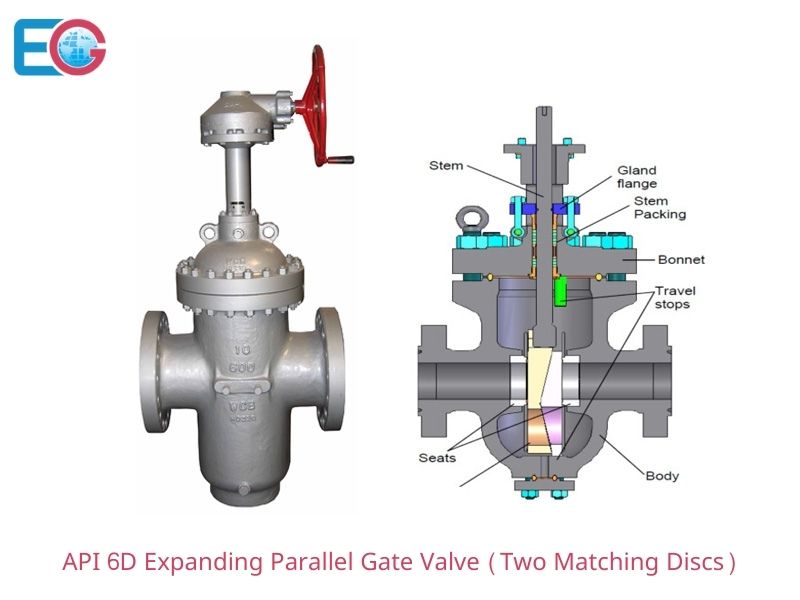
- Expanding Parallel Gate Valve. (Two Matching Discs with Expanding Construction.) Standard: API 6D
The Expanding Gate Valve is an abbreviation of “Expanding Parallel Gate Valve”.
The expanding gate valve’s structure is shown in the figure. It is composed of two discs, one main disc is machined with a male slope and the other auxiliary disc is machined with a female slope, these two slopes match each other perfectly. A connecting rod swing block mechanism is arranged between the two discs, the two ends of this mechanism are respectively connected with the two discs through a pin shaft.
When the valve needs to be closed, the valve stem drives the auxiliary disc to the fully closed position and is limited by the limit step at the bottom of the valve body. The main disc continues to move under the thrust exerted by the stem. Under the action of the two slopes, the main and auxiliary discs are gradually expanded to compress the seat surface to form a sealing pressure to close the valve. At the same time, the pin on the main disc drives the connecting rod to swing, so that the swing block is separated from the guide rib, and the whole mechanism doesn’t interfere with the expansion of the discs.
When the valve needs to be opened, the valve stem drives the main disc to rise, and the pin on the main disc drives the connecting rod to swing back. At this time, the auxiliary disc does not move. The main disc continues to rise, and the swing block on the connecting rod gets in contact with the guide ribs. At this time, the auxiliary disc moves closer to the main disc and the two discs are lifted together under the action of the whole mechanism and the two slopes. Then the valve is open.
This kind of structure can not only achieve good sealing, but also greatly reduce the wear of the discs and the valve seat, and prolong the service life, so it is now widely used, and its structure is constantly developing.
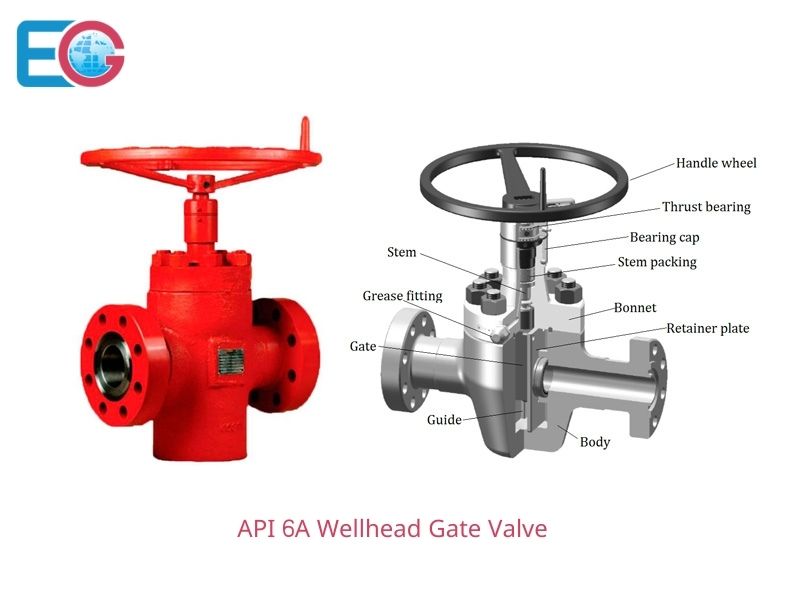
Wellhead Gate Valve. Standard: API 6A
The Wellhead Gate Valve is also a kind of parallel gate valve. It gets its name from where it is used. The wellhead gate valve’s design conforms to API 6A standard rather than API 6D.
A diversion hole (conduit) is a must to facilitate the cleaning of pipelines after opening. They can be produced to Single Disc or Two Discs parallel gate valves. In actual use, most clients choose Non-Rising Stem (NRS) design wellhead gate valve as per our experience. The body and bonnet are metal-to-metal sealed. The wellhead gate valve seat can adopt a metal seat or soft seat according to the client’s requirement, and the valve stem and bonnet are equipped with an upper seal design so that the packing will not contact the medium. The API 6A wellhead gate valves are used for Oil or Natural gas wellhead equipment, and the Anti-Sulfur type needs to meet the NACE MR 0175 specification.
They are all parallel gate valves of API6A standard and the related pressure ratings are API 2000, API 3000, API 5000, API 10000, API 15000, and API 20000.
Parallel gate valves are appropriate for the following occasions:
1) Petroleum as well as natural gas pipelines. Parallel gate valves with diversion holes also facilitate the cleaning of pipelines.
2) The transport pipe as well as storage devices of refined oil.
3) Oil and gas extraction wellhead devices, and valves for Christmas trees.
4) Pipelines with suspended particulate media.
5) Urban gas transmission pipe.
6) Municipal water system project
1) For oil and gas pipelines, both single-disc parallel gate valves and two discs parallel gate valves can be used. However, if you need to clean the inside pipeline, you should choose parallel gate valves with a diversion hole (conduit). It is also called Through Conduit Gate Valve as we mentioned in the above content.
2) For the transport pipe and also storage devices of the refined oil, you should choose a single disc or two discs parallel gate valves without a diversion hole (conduit).
3) For oil and gas exploitation wellhead devices, we mostly choose Non-Rising Stem (NRS) design Single Disc or Two Discs parallel gate valve with a diversion hole (conduit).
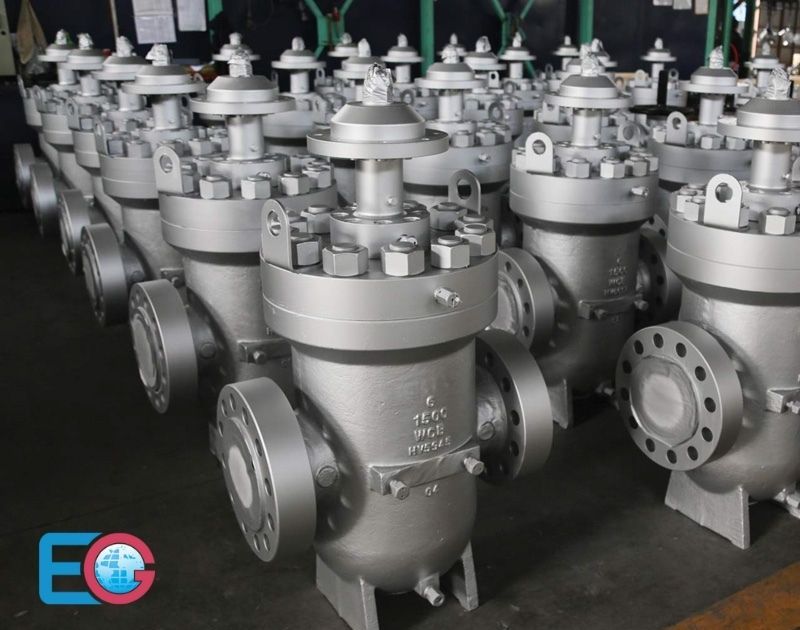
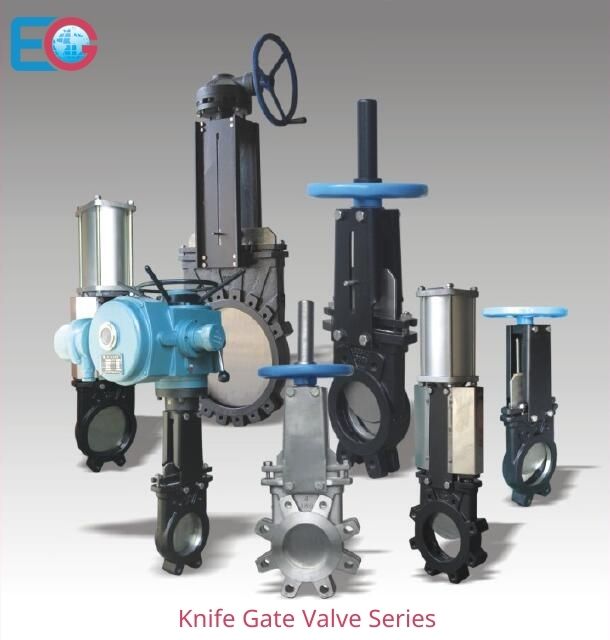
Background Information of Knife Gate Valve
In the 1970s, ordinary gate valves were also used in the pipelines for conveying coal slurry and ore slurry in the mining and power plant industries in China. Due to the particularity of the slurry, the use of ordinary gate valves cannot meet the requirements of its working conditions well, and it is easy to cause slag deposits, making the valve difficult to open and close, or even clogging. This problem has not been well solved. After the 1980s, China introduced knife gate valve manufacturer use technology and related equipment and produced electric, pneumatic and manual knife gate valves. In recent decades, the structure and characteristics of the knife gate valve have been further developed. Knife gate valve’s application range has been expanded from ordinary fields to a wider range of industries.
From coal preparation, gangue, and also slag discharge in mines and power stations, to city wastewater treatment and paper pulp treatment in paper mills, and from general industrial pipes to professional pipe systems such as food, medicine and sanitation. With its benefits of small size, tiny flow resistance, light-weight, easy installment, and simple disassembly, the wafer type knife gate valve entirely resolves the large flow resistance, heavyweight, difficult installation, large area, and other problems of ordinary gate valves, parallel gate valves, ball valves, globe valves, butterfly valves, etc. After its appearance, a great many general shut-off and also controling valves have been replaced by the knife gate valve.
Working Principle of Knife Gate Valves
The knife gate valve is mainly composed of a valve body, gate, valve stem, valve seat, and sealing packing, as shown in the figure. The valve is suitable for media such as mud and fiber-containing materials, and its blade-shaped gate can cut off the fiber material in the medium. It gets its name mainly from the blade-shaped gate that works like a knife to cut off the medium.
Working Principle: When the valve needs to be closed, turn the handwheel clockwise, the valve stem begins to drop and move the gate downward, continue to turn the handwheel, the valve stem pushes the gate down and moves the gate to the closed position.
At this time, the gate has completely covered the passage, and at the same time, under the action of the wedging force of the wedge-shaped knife-edge at the bottom of the gate, the surface of the gate squeezes the sealing ring, thereby realizing the sealing effect.
When the valve needs to be opened, turn the handwheel counterclockwise, the valve stem drives the gate to move upwards, the gate moves away from the sealing ring, and the valve stem continues to lift the gate (at the same time, the sealing ring is restored to elasticity, thereby improving the service life of the sealing ring), When the gate leaves the sealing surface to the top position of the diameter, the knife gate valve opens to the full-open position.
Advantages of Knife Gate Valve
The knife gate valve has the following advantages.
- Simple structure.
Due to its wafer structure, when compared with the other valve, it has the advantages of small size and lightweight. The installation location is not restricted, and the valve occupies a relatively small space, which is very easy to install.
- The fluid resistance is small.
The fully opened channel of the knife gate valve manufacturer make valve is like a short pipe section and the valve wall is smooth, which prevents the medium from depositing in the valve, so the open/close operation is flexible, has no jamming, and it is not easy to be blocked.
- Abrasion resistance, corrosion resistance, and good sealing performance
The gate is made of different stainless steel materials according to different mediums, and the rubber sealing ring can be used inside the valve. The rubber ring ensures good sealing performance. The operation test proves that the knife gate valve has a longer service life, which is 3 to 4 times that of an ordinary gate valve.
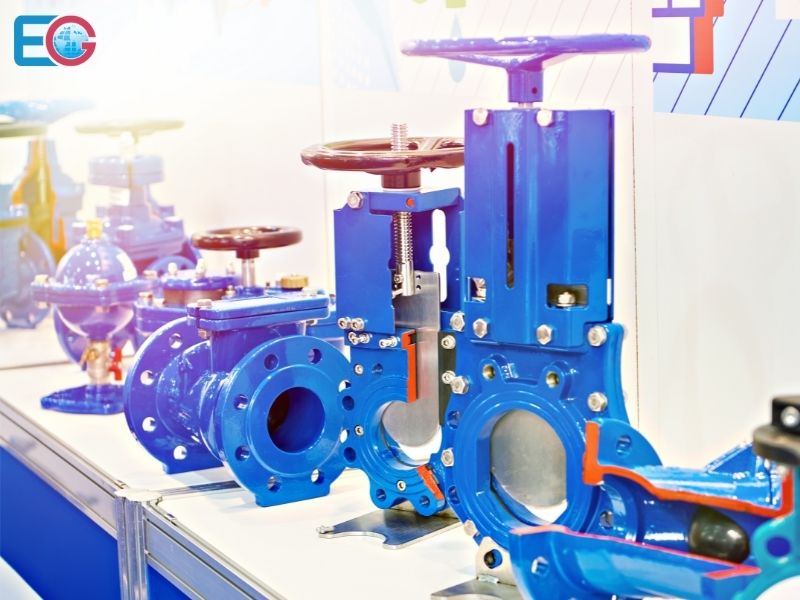
- A wide range of applications
There are various knife gate valves, which are easy to choose from. They can be used not only in sewage and sludge treatment, but also in coal, metallurgy, papermaking, chemical industry, power generation, and sugar industry, etc.
Used in coal, metallurgy, papermaking, chemical, power generation, sugar, and other industries.
- Easy to install and maintain.
The knife gate valve adopts a wafer connection, it is clamped between the two flanges of the pipeline and fixed by bolts passing through the flanges and the bolt holes of the valve body.
- Good economic benefits.
Because the knife gate valve has a longer service life, it reduces daily maintenance costs. The knife gate valve is not easy to be blocked so that it can avoid being dismantled and replaced and affecting production. The direct and indirect economic benefits are obvious.
Commonly used body materials for knife gate valves include cast iron, ductile iron, cast steel, and stainless steel. Commonly used sizes are from DN50-DN600. (2” to 24”). To improve corrosion resistance and erosion resistance, a fully rubber lined structure can also be used. The gate is generally made of stainless steel. It should be noted that although the knife gate valve can be equipped with standard flanges and bolt fasteners, its actual working pressure will be much lower than the normal flange’s rating. For example, the knife gate valve with ASME B16.5 Class150 flange face can only work at a Limited to 3.5~10 bar. As per EG Valves’ experience, the actual working pressure of the knife gate valve for solid conveying, mud and paper pulp, and dry particle conditions is generally limited to 50% of the pressure rating of its body material.
Two Different Bonnet Structure of Knife Gate Valve
Knife Gate Valve without Bonnet.
The majority of the knife gate valves have no bonnet structure, which means the gate is not completely enclosed inside the valve body. When opening the valve, the gate rises and exposes the body.
This structure is difficult to fill with complex packing. Even if it can be filled with complex packing, the packing’s sealing is not very reliable, and it is generally only suitable for use in a non-hazardous medium.
It is worth mentioning that there is also a structure with a diversion hole for the knife gate valve without a bonnet, which is indeed a penetrating type. The gate is always in close contact with the seat sealing. Its gate is the same as a parallel gate valve with a diversion hole. (See the figure) There is a round hole on the gate, through the opening and closing of the gate, the round hole on the gate can completely match and separate from the passage.
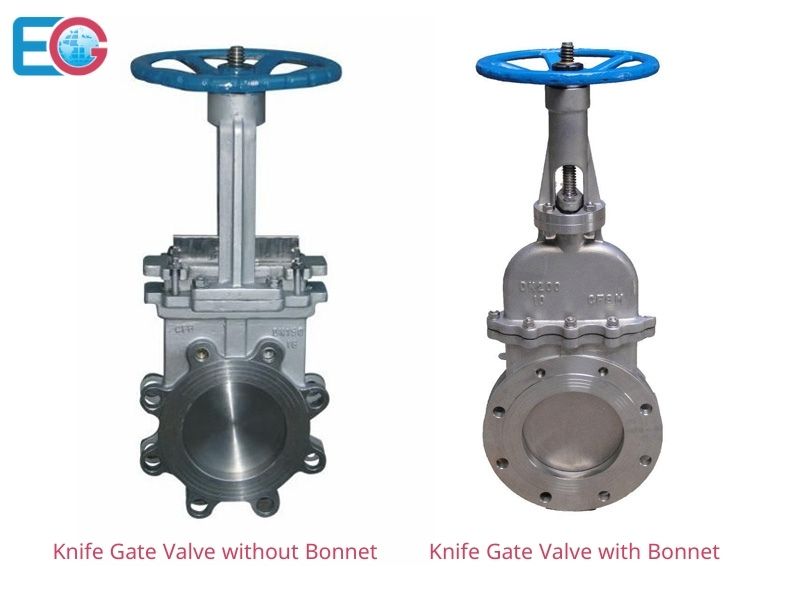
In addition, the advantage of this structure is that the valve body has no grooves in the passage of the valve body, the medium will not be blocked, and has the characteristics of full-port (bore) flow, which is suitable for use for powder and granular media.
Knife Gate Valve with Bonnet.
A knife gate valve with a bonnet structure is often called a fully enclosed knife gate valve (see figure).
The opening and closing of the gate are completed in the inner cavity of the body, which is completely isolated from the external environment. It is suitable for pipelines that are installed at the bottom of the sewage tank and the valve body is immersed in liquid. If the gate is not isolated from the external environment, then the gate will be quickly corroded by the external environment and affect the service life of the knife gate valve.
The operating principle and sealing structure are the same as the bonnet-less type. The valve body and bonnet adopt a special structure so that the medium can circulate to avoid blockage, see figure. This structure is suitable for water conservancy engineering, underground pipelines, and other fields.
What are the Uses and Applications of Gate Valves?
Gate valves have a symmetrical design with equilateral-constructed seating. That’s why they feature in a variety of industrial plants.
Wonder where are gate valves used today? Here’s all you need to know:
- Irrigation: In systems where you need a high flow rate, especially irrigation systems find the speed of closing essential for strength. Irrigation gate valves are made with optimum materials to avoid any signs of corrosion and
- Oil: From lube oil to the transportation of crude oil, gate valves are used for regulating thick fluids such as varnish, molasses, cream, honey, and light grease. Its high operating pressure with the upstream flow is the reason why it’s used less in oil and gas industries.
- Gas: To regulate non-conducting gases and light gases at average to high temperatures, gate valves are excellent. It may be used for underground and above-ground installations based on the type of gate valve china and its configuration.
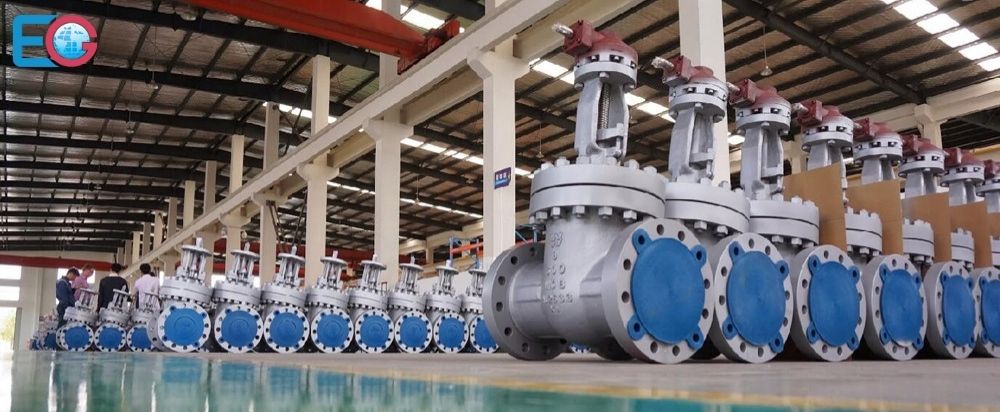
- Slurries: The higher-pressure settings of gate valves is crucial to isolate the flow as well as for cutting through the flow. That’s why knife gate valves are excellent in slurries with granules, solids, and powders. Both non-abrasive slurries such as paper and pulp as well as abrasive slurries like mining use this valve.
- Steam: Gate valves with flexible wedges are used in steam settings as solid gates may get deformed due to the heat or cause thermal binding.
- Corrosive liquids: OS & Y type of gate valves find their use in industries that use corrosive liquids because the threads of the gate are external to the fluid containment space. Stainless steel gate valves are typically used in settings that regulate corrosive liquids too.
- Fire Hydrant Lines: Outside Screw & Yoke gate valves are also used for fire hydrant lines and are often termed as fire valves. It may be used for fire sprinklers and fire suppression and often comes with standard regulations like UL/FM and VdS.
- Marine: When it comes to valves on ships, non-rising gate valves top the list. For this application, gate valves are specifically configured, especially to avoid corrosion and marine-associated depreciation. It’s widely used in circuits in ships as it ensures an unrestricted flow too and materials used may range from bronze to ductile iron, and cast iron.
- Automotive: This type of valve is extremely popular in the auto industry for regulating the flow of media at both discharge point and flow line. The tight sitting of knife gate valves also prevents any rise or loss of pressure within the system.
- Pharmaceuticals: Chemical and pharmaceuticals also use gate valves that can resist corrosive liquids. Slide gate valves are great in this industry owing to their polymer seal that makes sure the wedge is tight enough to prevent dust from entering the system.
- Mining: The ability to resist abrasion and withstand high temperatures makes a gate valve ideal for the mining industry. The large size of gate valves also merits this industry to ensure the unobstructed flow of granules and solids.
- Power plants: The isolation feature of gate valves ensure that it’s ideal for preventing leaks, thermal binding, and maintenance problems. Typically, pressure seal gate valves are used for this purpose.
How to Choose a Gate Valve?
Gate valves are isolation valves used in a variety of industries as we just learned above. Finding the right one prevents damages and leaks besides ensuring optimum operation.
So, how do you select the right type of gate valve for your needs? The following will help you learn the complete set of instructions needed when buying a gate valve china.
- Temperature: Typically, gate valves operate at temperatures ranging from -272 to 675 degrees Celsius based on the type you select.
- Medium and its Working Pressure: These two are always the most important parameters. Be sure to provide accurate media and its working pressure to us EG Valves to make the right selection for you.
- Application: If you’re selecting a gate valve for mining, the knife gate valve is an option although it’s not good for throttling or flow control. Hence, knowing the limitations of gate valves before you finalize them. Talk to our customer service team to determine the right gate valve for your purpose.
- Gate (disc) Type: The type of Gate from wedge type, parallel type, one-piece type, two pieces type, which work differently based on where you use it. Find out the most effective gate type for your needs before you order.
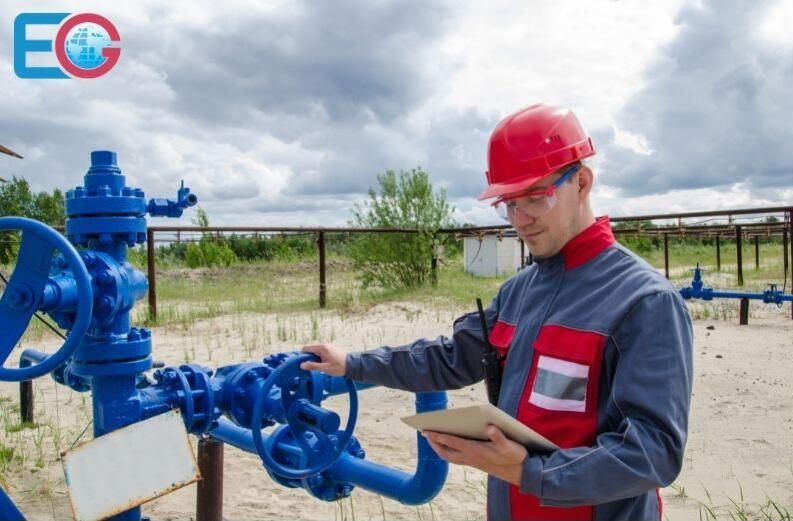
- Corrosion protection: Does the wedge come with protection against corrosion? Do you need it? Find out if the type of gate valve you choose comes into contact with media or can corrode it from manufacturers.
- Seating: Gate valves often come with stellate seating to prevent improved resistance to wear and tear as well as to prevent abrasion and erosion of the sealing area.
- Sealing: Sealing around the stem, body, and bonnet is crucial in gate valves. They should also come with backup seals to prevent any type of contaminations, leaks, and corrosion.
- Materials: You must select the right materials of construction for the gate valve and ensure that they’re compatible with the media that will flow through it.
- Structural reasons: Characteristics of the structure of the gate valve such as flange connection, welding, bolted, form of sealing surface, and even handwheel requirements can determine the right type of gate valves for your use.
- Cost: Is the cost of the gate valve proportional to your budget? There are cheap and expensive gate valves based on the different materials, valve bodies, and buildings of internal parts. Talk with the EG Valves team of china gate valve manufacturer to know which is the suitable one for you.
What is the Quality Control For Gate Valves at EG Valves?
At EG Valves, we’re strict about regular inspections and assessments to ensure high standards and top-notch quality.
Take a look at some tests we run on gate valves to ensure the quality:
- Inspection of Raw Materials
- Visual Investigation
- Backseat Test
- Shell or Valve Body Tests
- Pressure Closure Tests: Low-Pressure And High-Pressure
- Hydrostatic Tests (Body, Seat, Back Seat Tests)
- Analyses: Furnace Infrared Analysis, Spectrum Analysis, and Chemical Analysis
- Retesting of the Gate Valve
Want to know the QC process of EG Valves in detail? Go to the ‘Contact Us’ page with your request to our experts right away.
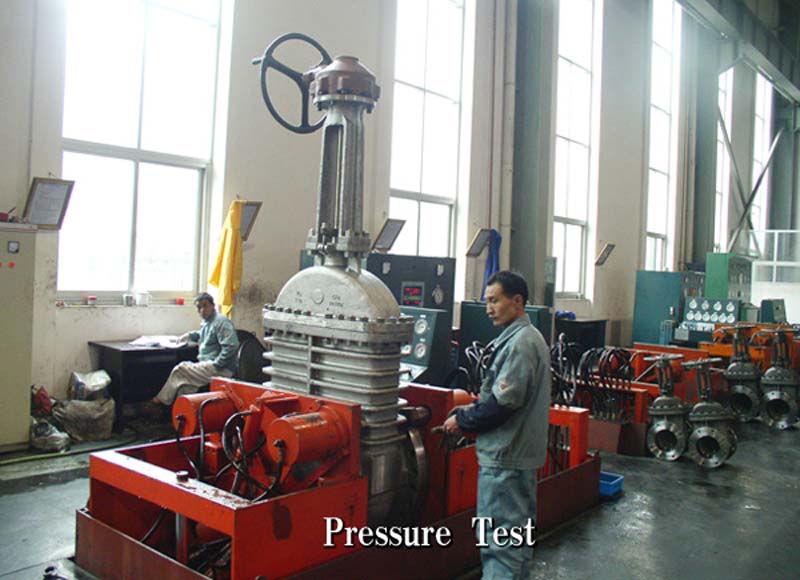

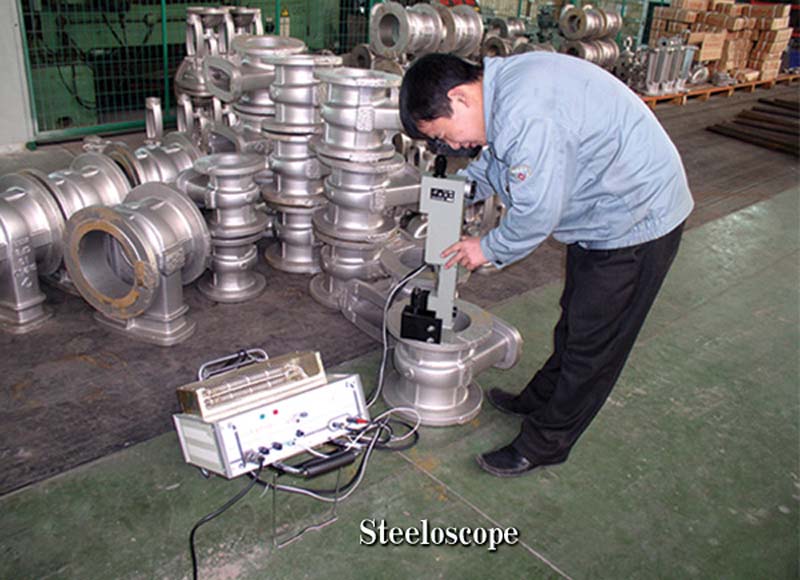
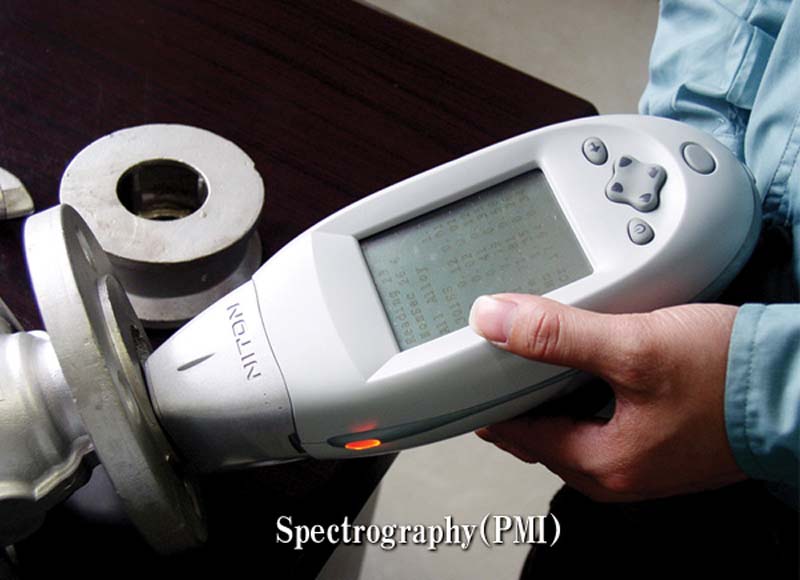




How are Gate Valves Packed at EG Valves?
When packing gate valves, our main mission at EG Valves is to minimize damages that may occur in transit so that you get a perfect piece with every bulk buy. In the past two decades of catering to customers around the world, we’ve perfected several packing processes that are the safest for shipping gate valves.
- Step one is where the warehouse manager inspects the gate valve before
- Step two is where a separate team takes the size, dimensions, characteristics, specifications, and quantity into inspection based on your order form.
- Step three is where the inner lining of the gate valve is packed with a polybag.
- Step four is where we add plywood cases that are intricately lined with tarred paper.
- Step five is where we add another layer of plywood between layers of several gate valves to protect it even better.
- Step six is where we coat the packed gate valve order with iron tape to further minimize damages during shipping.
- Step seven is when we complete the labeling based on your shipping address.

Finally, you will receive the China gate valves in a good package and you’re set to put them to use.
What are the main Standards for Gate Valves?
Regulations ensure that gate valves created by different manufacturers stick to the appropriate quality standards.
Take a look at the most important standards and regulations on gate valves below:
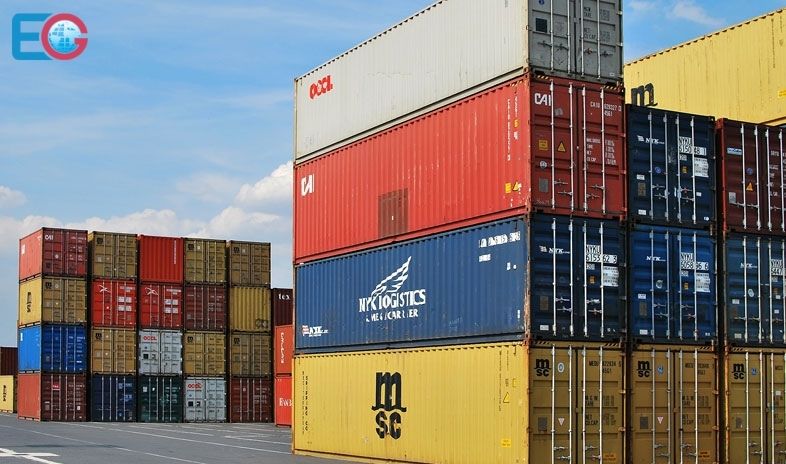
- API 598: Testing for gate valves adheres to standard valve pressure testing that permits to ensure zero leaks.
- API 600: Typically used for valves of sizes 2 to 24 inches in the valve design, API 600 determines standards for valve construction and material choices for the internal body parts.
- API 602: For gate valve sizes below 2 inches or from 1/2 to 1-1/2 inches are covered under this regulation, typically for forged steel valves.
- API 603: Another valve design regulation, API 603 stands for corrosion resistance in pipe sizes adhering to ASME B36.
- API 6D: Specification for pipeline valves, end closures, connectors, and swivels.
- API 6A: Specification for wellhead and tree equipment.
- BS 1414: This is a valve design specification by British Standards for steel gate valves for carbon steel, solid wedge, OS & Y, and rising stem within Classes 150 to 2500.
- BS 14846: The British Standards certification for valve design BS 14846 ensures standardization of strength, durability, and security of the valve components.
- BS 5352: A design regulation from British Standards for steel wedge gate valve of 50 mm and smaller for industries like petrochemical, petroleum, etcetera.
- ANSI B16.10: This standard ensures the Face to Face Dimensions of gate valves manufactured by different suppliers remain the same.
- ANSI B16.5: A certification exclusively for flanges made from cast or forged components.
Get in touch with EG Valves and order your Gate Valves today.
As one of the leading china gate valve manufacturer, EG Valves has a robust history of catering to clients of all shapes and sizes across the world. No matter what your gate valve requirements are, whether they’re custom or generic, we can help you bring them to reality.

